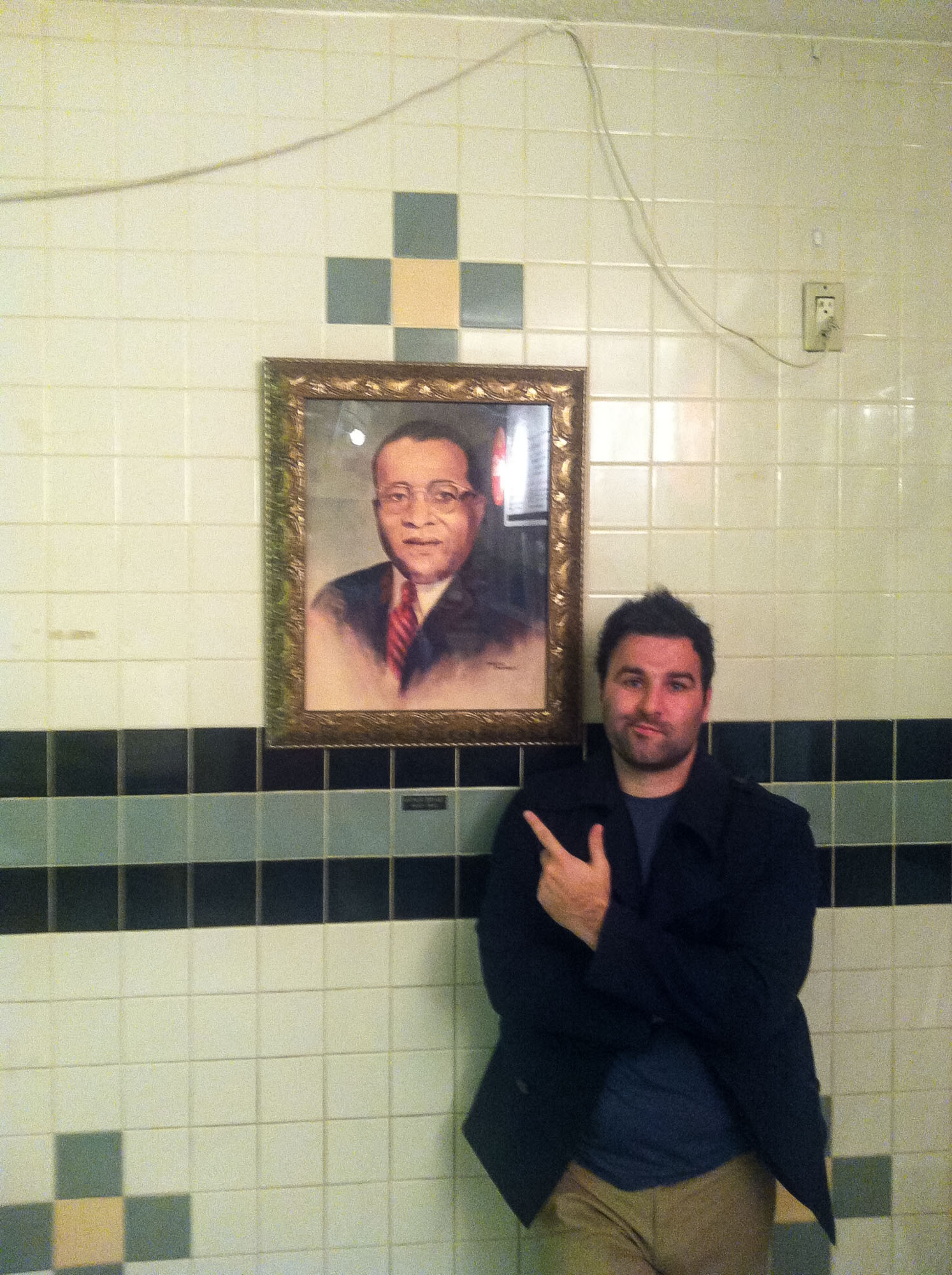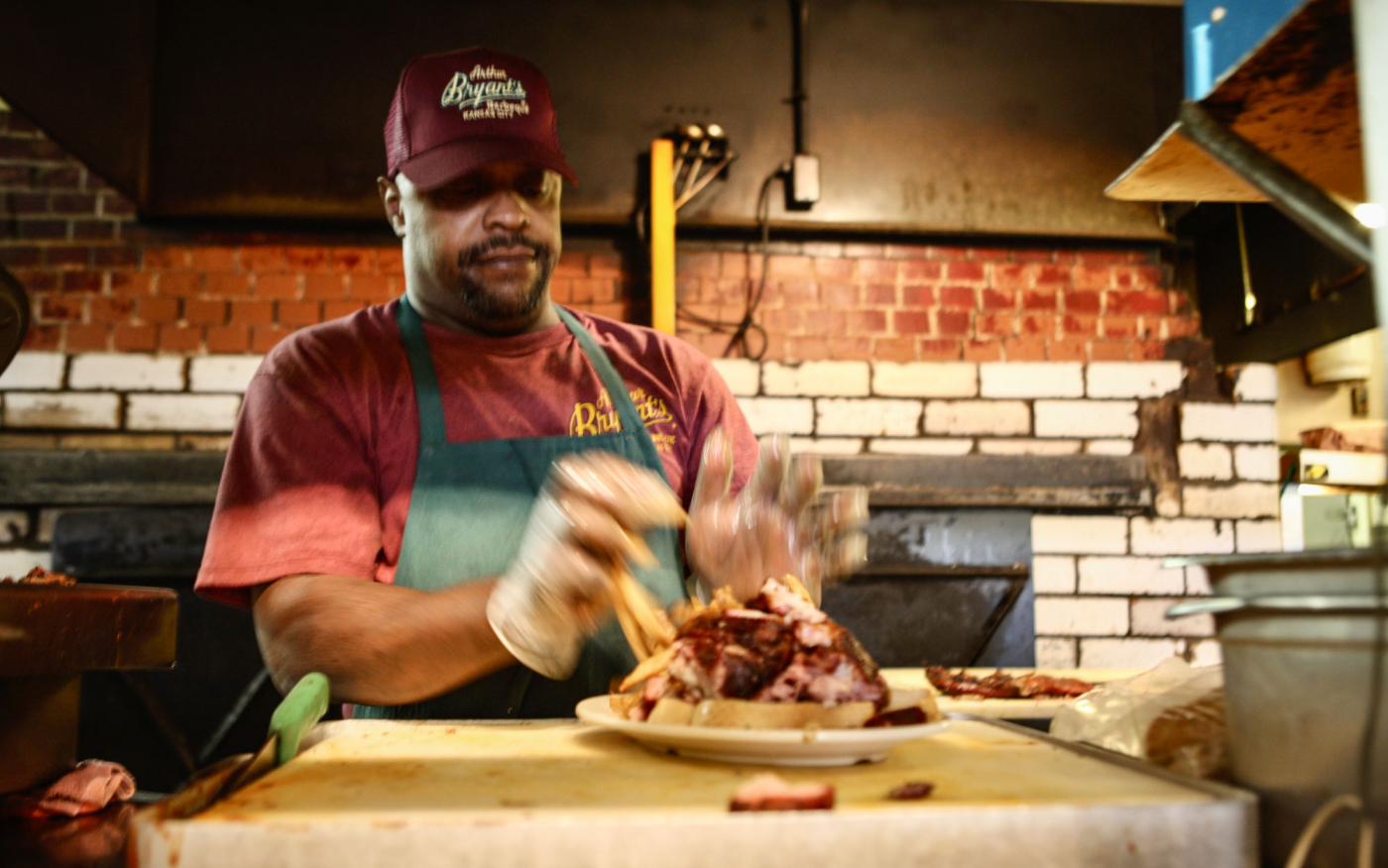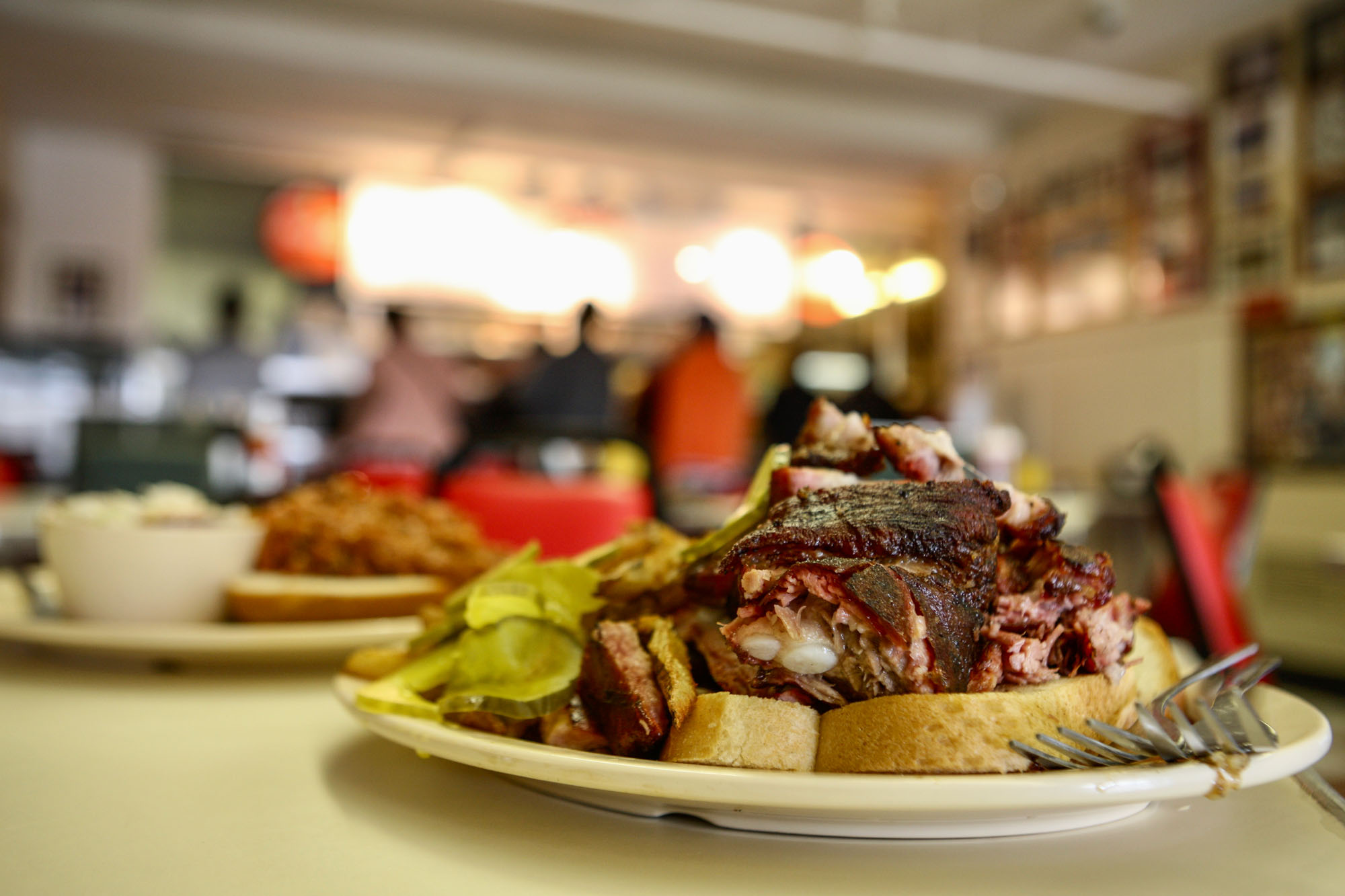I can vividly recall the advantageous privilege of being a visitor to the Midwest’s barbecue pit-houses, removed of all guilt, and affording me the comfort to lip-smack, finger-lick and enjoy pulling apart the burnt ends and brisket. The slathering of prime cookout meats and getting downright dirty in my demolition of long-end ribs. Kansas City has over a trillion barbecue restaurants, all intestine-busting protein benders with good, local Boulevard beer. And upon returning to my former residence, I intended to smash through as many as time would allow.
The smoky bouquet of cooked meat and molasses hangs heavy in the air and is the defining smell of KC afternoons. Local Midwest tomatoes and vinegar are used to slather thick cuts of pork quad and fatty belly, creating a sauce that, in the words of Rich Davis, founder of KC Masterpiece Barbecue Products and owner of KC Masterpiece Barbecue & Grill, “doesn’t fall off the meat and into the fire.”. Barbecue, or barbeque as it’s sometimes spelt in Kansas City, is considered their greatest and most enduring export, in addition to their rich jazz history. And I arrived hungry.
Charlie then took over the restaurant in 1940 after Perry died, with Arthur taking the reins in 1946. He died of a heart attack just after Christmas 1982, in a bed that he kept in the restaurant
It wasn’t my first taste of KC barbeque. That was eight years ago when I arrived in the city as a 19-year-old student, to attend college at The University of Missouri-Kansas City – an underutilised member of its Track & Field team. Returning, I was welcomed into the homes of old college friends and reconnected with that barbecue yearning, something I had failed to equal or better in the intervening years. Back in the Midwest, I rediscovered the bond, properly and unmistakably KC-barbeque-style; highlighted by that famous KC Sauce – kettle-cooked with sugar to help thicken and for that perfect balance of sweet ‘n’ smoky flavours, plus additions of dried garlic, onion, vinegar, salt, lard, spices, mustard flour and those Midwest tomatoes – generously lathered across racks of ribs and glistening through the brisket, absorbing into the strands of pulled pork. All helping to create a legion of giddy meaty gobblers to which I happily and hastily joined the line.

David with Arthur’s portrait
The idea of barbecue in America pivots drastically from Britain and the rest of the world. From preparations and styles in Brazil and Argentina to Spain, Turkey, Greece, Korea and Australia. Or Mongolian barbecue, which was a thing in London at one point. Americans use predominantly corn-fed beef, which bulks the cattle up to hulky heifers and increases the fat-to-muscle ratio, while the pigs feed on corn and soybeans. Issues continue to be debated around US states and animal welfare problems – confined to sow stalls and tail-docking – because there is no federal US legislation specifically concerning pig welfare in contrast to the EU. And then there are Americans and their barbecuing habits. They cook how they like their meat, fatty and sweet, charred on the outside. The people of Kansas City cook the famous sauce into the meat while smoking or grilling or brush it on immediately after cooking.. The taste is tangy and very sticky.
A local favourite is Henry Perry’s restaurant – now Arthur Bryant’s on 18th and Brooklyn – which became a cultural point in the 1930s and was quickly established as the go-to for me and my college friends. The history of barbecue in Kansas City began here, Henry Perry operating out of a trolley barn in the city’s African-American neighbourhood around 18th and Vine. He would slow-cook ribs on pages of newsprint for 25 cents a slab, and his restaurant became a major cultural point during the heyday of Kansas City Jazz and during the “wide-open” days of the politically corrupt Tom Pendergast in the ‘20s and ‘30s. Working for Perry was Charlie Bryant, who soon brought his brother, Arthur, into the business. Charlie then took over the restaurant in 1940 after Perry died, with Arthur taking the reins in 1946. He died of a heart attack just after Christmas 1982, in a bed that he kept in the restaurant.
The restaurant that the renowned New Yorker author Calvin Trillin pronounced “the single best restaurant in the world”, albeit in 1972, remains a defining stop-off in Kansas City’s culinary itinerary, as much a part of the city’s fabric as Union Station or Arrowhead Stadium. Writing this, I found a small ad in an old edition of the Kansas City Sun from 1917, in which Henry Perry is described as having “a heart as big as Kansas City” and detailing how he was preparing to serve a free barbecue to 1,000 men, women and children – “to all old people of both Kansas Cities” – at the cost of $500.00 to him because as the article states, “he has neither wife nor children and as he says “God has been so good to me.”
Revisiting the iconic square-block building, the smell of sliced pork and brisket hit me like a nostalgic dream, debilitating me for a few unsteady seconds. There it was again, familiar in the best possible way, sending me back to my college days. The cuts of beef and ham, the sliced pork and turkey, the popping sausage and crispy burnt ends. And then the Speciality items: baby back ribs, half a chicken, The 3 B Sandwich and The 18th & Vine. I stayed true to my college order, the words of which are seared into my brain, even after all these years: baby back pork ribs, open-face burnt ends (including all of those brittle, scribbly bits), half a loaf of bread and a side of smouldering BBQ beans – to help soften and absorb into the doughy bread. Then I watched the meat masters at work, carving those perfectly velvety, unctuous cuts that would land in the bread like a kiss.
Anthony Bourdain included them in his “13 Places to Eat Before You Die” list, calling Joe’s “the best BBQ in Kansas City, which makes it the best BBQ in the world.”
There is also Big T’s drive-through Bar-B-Q on Blue Parkway and Jack Stack, and the closer-to-home Gates Bar-B-Q, just off the Plaza and close to my college dorms, where you can order sliced meat by the pound and wafts of hickory-smoked brisket fill the room; and where I would order the pork and turkey double-decker with fries and burnt ends served on a hoagie (a sub sandwich split lengthwise) with my track buddies Kaleb and Nick. The sauce, however, does vary here, with Gates’ not containing molasses. And across the border in Kansas, things are no less competitive. Perhaps the most famous barbecue pit-house being Joe’s Kansas City (formerly known as Oklahoma Joe’s), located inside a gas station at the corner of 47th Avenue and Mission Road. They’ve won eight Grand Championships, including the prestigious American Royal BBQ. Anthony Bourdain included them in his “13 Places to Eat Before You Die” list, calling Joe’s “the best BBQ in Kansas City, which makes it the best BBQ in the world.” Controversial words and a view potentially violently problematic amongst Missourians and Kansans.
Whichever side of the Stateline you fall, the whole approach to barbecue is something of great, immeasurable pride to Kansas City residents. There have been more than a few neighbourly squabbles, and the subject remains a family-dividing, relationship-ending, punch-up in-the-street debate, as it is across much of the United States. In St. Louis, the barbecue sauce has more vinegar and less sugar compared to Kansas City, which makes it have a thinner liquid coating. And Austin, Dallas, Nashville, Memphis, Chicago and the Carolinas would all advocate their regional renditions, proclaiming theirs the best in class – roasting, smoking, grilling; over oak, cherry, pecan, maple, hickory; dry-rub, wet-rub; with or without sauce, and on and on.
Barbecue here is strict and academic. It is scientific and near-religious, from the feed and sourcing of the meat to its preparation and cooking styles, right through to consumption. Barbecue is a higher calling for many, something dutiful, something other. But I’ll take KC every time, and almost always at Arthur Bryant’s Barbeque, no contest; for the delicious, lip-smackin’, finger-lickin’ joy of it all, right down to the misty-eyed sentiment it provides. Yep, a plate of flame-grilled meat. After all these years, I arrived hungry but left wistful and dewy-eyed. Ah, it’s been a pleasure. Until next time, KC. C
Arthur Bryant’s Barbeque, 1727 Brooklyn Avenue, Kansas City, Missouri 64127, USA
arthurbryantsbbq.com






